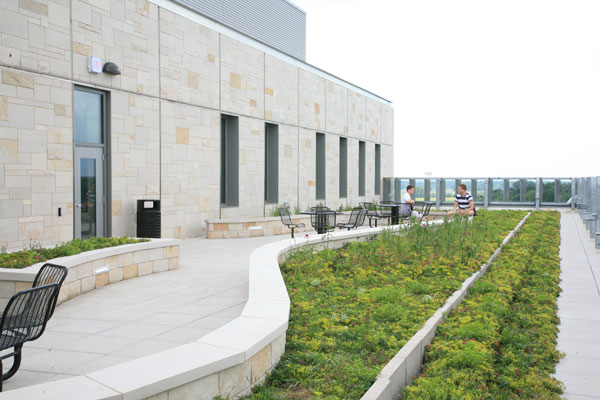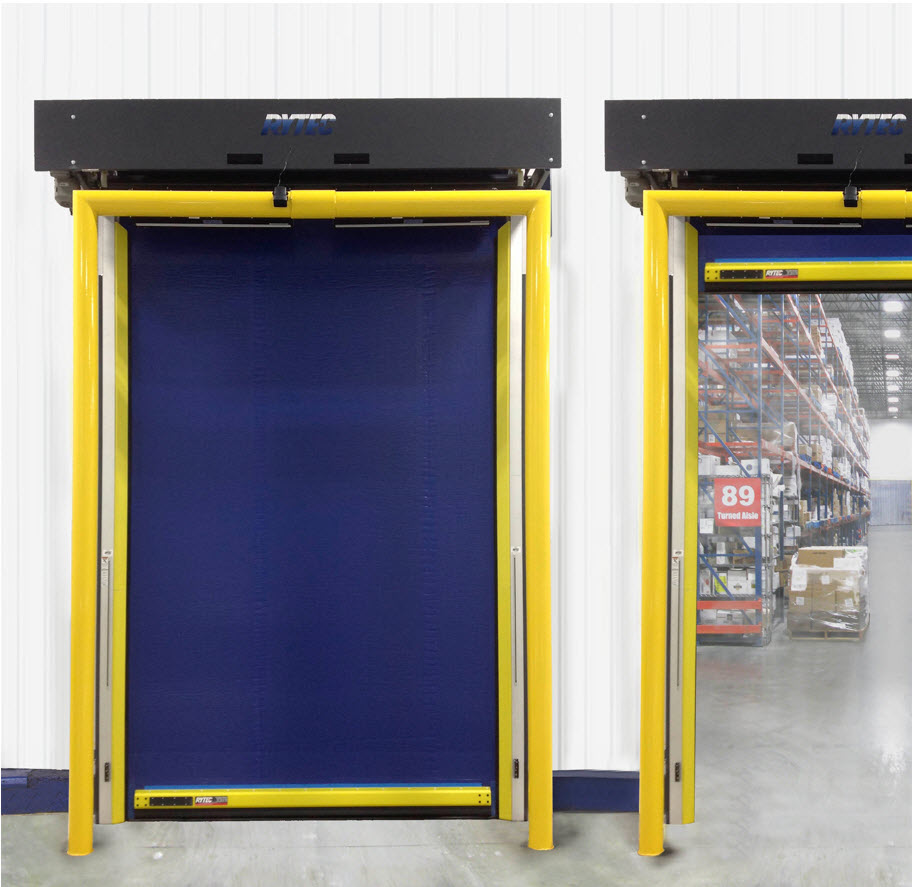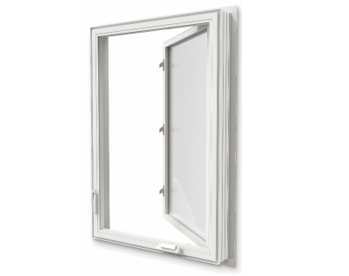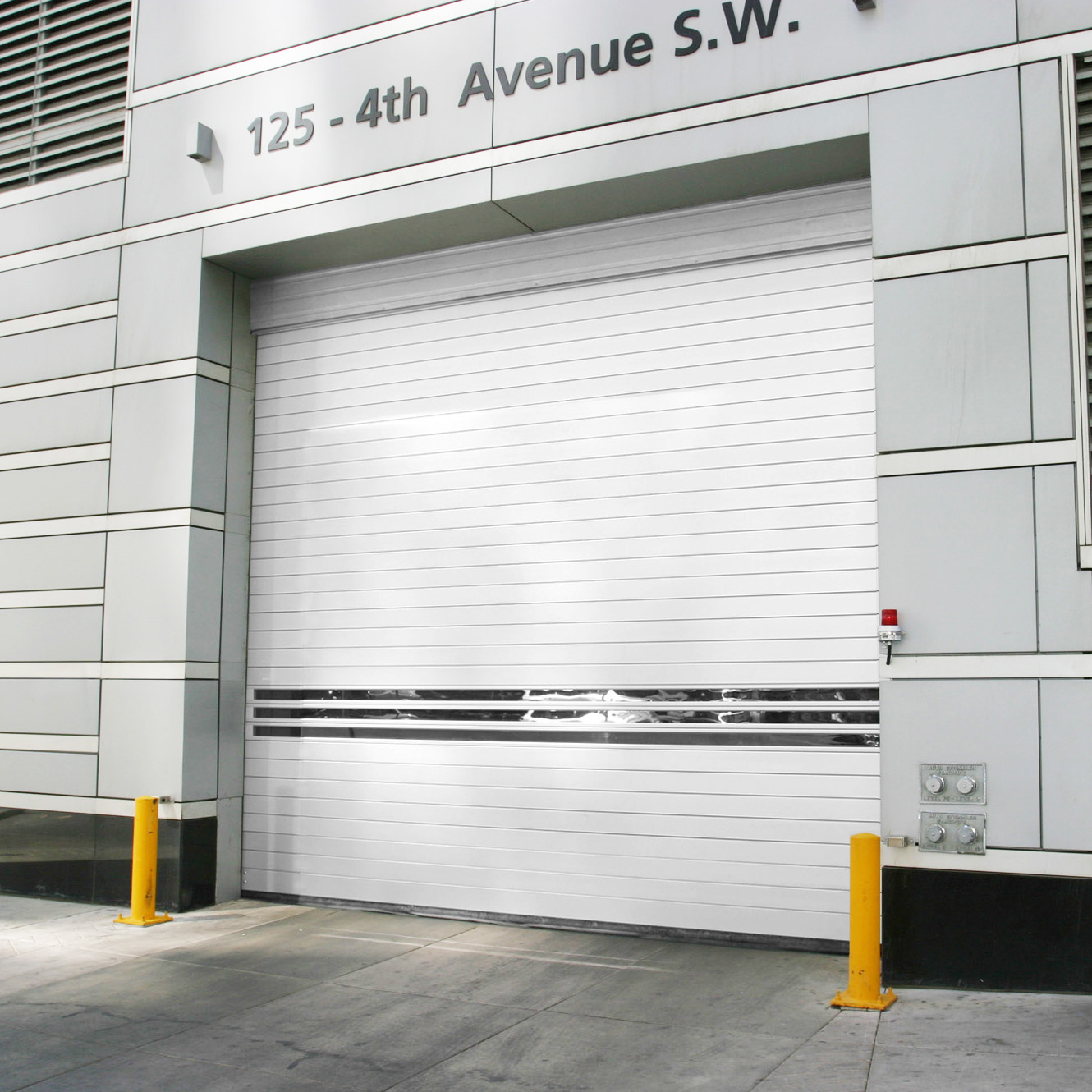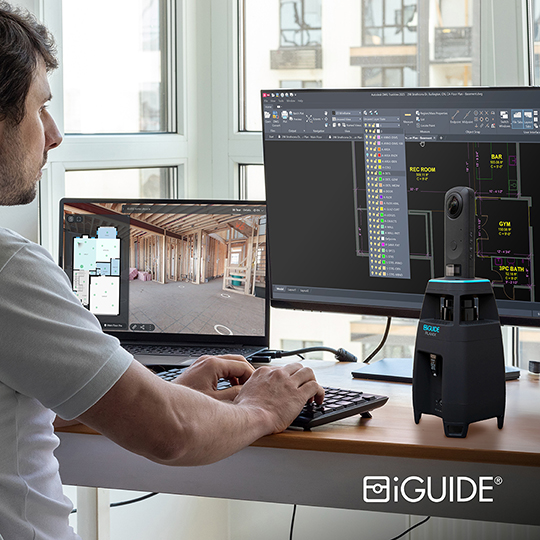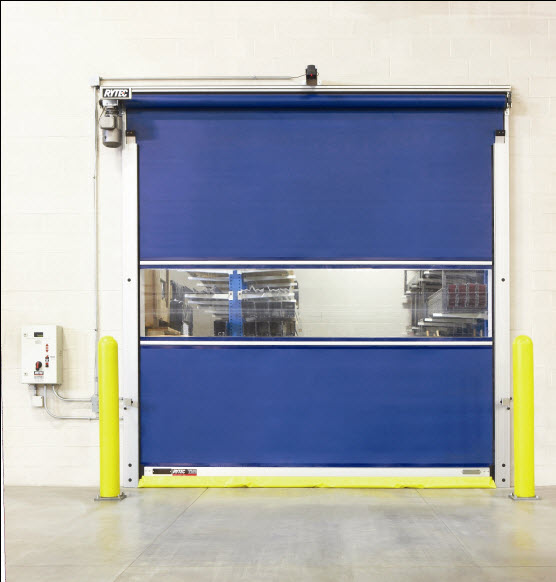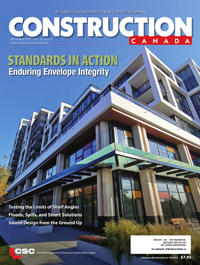From niche to necessity: Fabric structures go mainstream
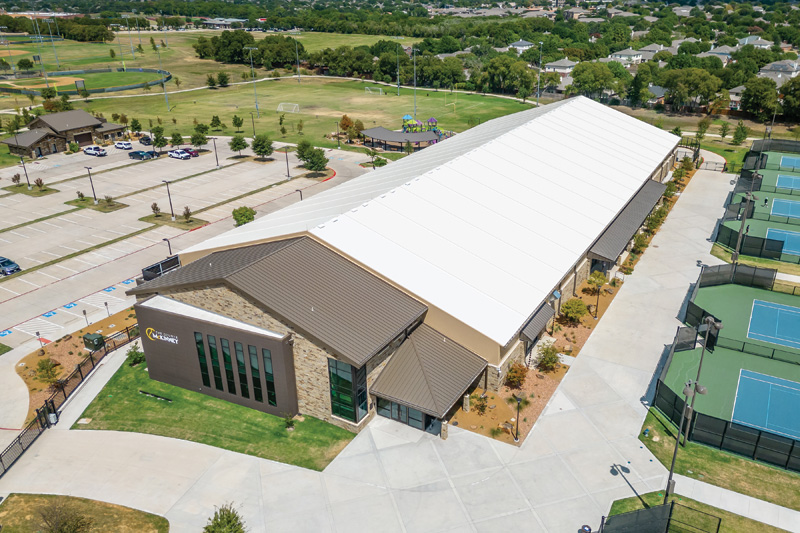
There was a time when the mention of fabric as a cladding solution would have been limited to niche applications. Suggesting fabric for conventional building use would have probably been met with confused looks or raised eyebrows. Today, however, that outlook has greatly changed.
When examining the construction options for sports and recreation centers, municipal buildings, and various industrial facilities, modern tension fabric buildings are frequently mentioned. In fact, for certain applications, their cost-effectiveness and speed of installation make them the only viable choice.
This did not simply happen overnight. It required significant changes to the way fabric structures were designed and to the materials used to build them. Massive steps have been taken over the past 15 years to enhance the engineering behind fabric buildings, but it has not stopped there. The industry remains committed to continuous improvement, with some companies maintaining International Organization for Standardization (ISO) and Canadian Standards Association (CSA) A660 certifications as they strive to ensure the best possible product for end users.
Proper securing of fabric
Any fabric building constructed two decades ago or longer almost certainly featured web-truss framing. Some of these structures also had a mono-cover, which used a single piece of fabric loosely draped over the frame and attached only at the ends and sides of the building.
A panel attachment system, which involves sliding 6-m (20-ft) wide fabric panels through an aluminum keder channel to connect to each framing member of the structure, was more commonly employed than a mono-cover. The challenge with this method was finding the best way to attach the aluminum extrusion channel to the frame.
Many installers use tek screws, but those are sometimes over-torqued during installation, causing sheared heads or stripped-out threads. Further, motion-type pressure can cause fatigue at the extrusion’s pressure point. Water can also settle into the holes around the screws, leading to corrosion.
A bigger problem than the screws themselves is that this process often requires secondary bracing to be disconnected while trusses are literally pulled out of plane to apply horizontal tension to the fabric during installation. Flexing the building frame after it has been erected could weaken the structure and reduce its load-bearing capacity.
Properly attaching fabric to the structure was not the only issue on the table. Web truss design, in general, has long frustrated architects and customers who felt there is too much subjectivity in the engineering from one fabric building company to the next. With multiple problems begging to be solved, some leading manufacturers ultimately made the decision to use solid I-beams instead of web truss framing. With structural-steel framing universally recognized within the engineering community, the change instantly advanced the credibility of tension fabric buildings.
Going hand in hand with the shift to rigid I-beams, a patented fabric attachment system was developed that uses stronger 13 mm
(0.5 in.) diameter bolts to clamp a keder rail to the top flange of the structural steel frame. The key advantages of this method, as opposed to using screws, is it enhances corrosion resistance by eliminating any areas where water could accumulate, and it makes the attachment much more secure.
The real game-changer for this system, however, is that the frame can remain permanently in place during panel installation. There is no need to twist the frame or remove bracing, which helps ensure that fabric panels are pulled into place with properly calculated horizontal and vertical tensions. The process works so smoothly that a fabric structure can be clad in one-third the time it takes to screw down all the siding on a similarly designed metal-clad building.
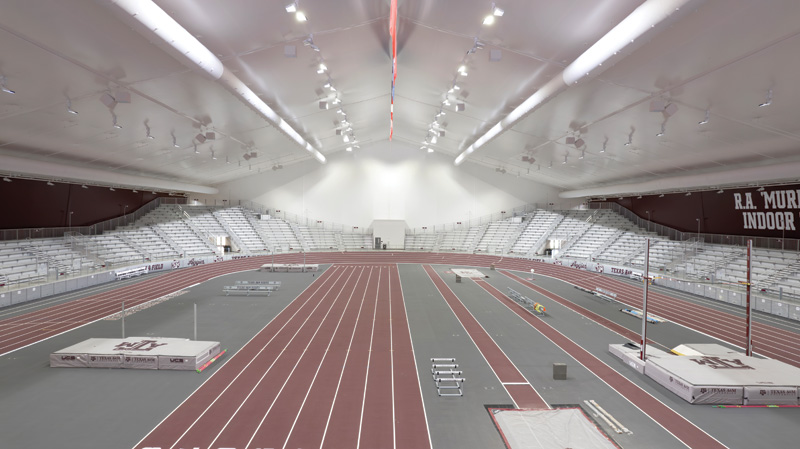
Polyvinyl chloride (PVC) fabric for all
Historically, the type of fabric specified would depend on the building project. For many years, the most commonly used material across North America was polyethylene (PE), a fabric that is easy to work with but carries an average warranty of only 15 years. For higher-end fabric facilities looking for a roofing solution that would last much longer, users turned to PVC, a fabric that contains a heavier yarn and also usually comes with a higher price tag.
Another push for the industry came with the introduction of a new PVC to the market that was designed to provide exceptional strength while remaining cost-competitive with PE. The end goal was to bring greater longevity to tension fabric buildings across all industries, giving every user the option to have a premium roofing material without breaking the bank.
While the price may be in the same ballpark, a closer look at this advanced PVC shows why it is so much more durable than a standard PE fabric. With PE, there is a scrim layer where the fabric weave is, which is then sealed in by sandwiching it between two layers of polyethylene.
The newer PVC option has seven layers instead of three. In the middle is a high-strength woven base fabric, with top and bottom primer layers applied to that. Next, topcoat layers are added to both sides—this is the actual PVC that gives the product its shape and flexibility. Lastly, to deliver a smooth, slippery, and durable finish, everything is sealed with lacquer layers on the top and bottom. Weathering tests have shown this PVC to possess twice the tensile strength of typical PE material.

Rigid-frame engineering
While the industry has greatly benefited from improved cladding offerings, it was the marriage of a fabric membrane with rigid-frame engineering that truly opened a world of possibilities for tension fabric buildings.
In the heyday of web-truss “hoop” structures, buying a building was like ordering off a menu. Customers had to pick from the limited standard structure sizes made available by a given manufacturer. In cases where customizations were requested, the cost would go up significantly. This is a major reason why fabric structures were historically confined to niche uses, where often the only priority was meeting the bare minimum requirements.
With the shift to rigid-frame, I-beam engineering, manufacturers were now able to start every building design with a clean sheet. Every project could be fully optimized to the individual user’s specifications without adding a single extra step to the process.
Engineered steel I-beams also deliver superior structural strength compared to web truss, which further expands the abilities of fabric structures. For example, if a building user wanted to install a conveyor, fire suppression system, or any other hanging load on the building frame, those items could be accounted for while using finite element analysis (FEA) software to create the initial design. Engineers can optimize each framing member based precisely on the anticipated loads, rather than over-engineering an entire building.
A strong structural frame also allows for long clear-span designs without the need for support beams. Fabric buildings are extremely popular for athletic facilities, providing wide open floor space for numerous sports. The advantages also go beyond simply having enough room. Scoreboards and lighting can be easily mounted on the building frame. Mezzanines and spectator seating can be accommodated.
Not to be overlooked is that the I-beam design also gives the building a conventional look, which is not an insignificant factor when trying to make inroads with clients who are only familiar with traditional construction.
Interior liners can be added to any rigid-frame fabric structure as well. In some instances, the project owner may desire insulation for their building application, where at other times the insulation may be required to meet energy codes. Comprised of the same PVC used to clad the exterior, a liner serves both to seal off insulation and to provide a soft interior ambience within the facility.
Brick facades and other architectural elements can be applied to the exterior to further enhance the building’s esthetics. Functional items like ice breakers and gutters can also easily be added to assist with snow and water mitigation.

Corrosion resistance
For applications where corrosive elements or high moisture content are potential threats to the longevity of a building, fabric’s natural resistance to corrosion has always made it a preferred cladding option. Historically, however, even tension fabric buildings have been vulnerable in such environments, since the framing structure is still made of metal.
The truss frames used in older style fabric structures were actually hollow tubes, meaning corrosion could originate inside the tube, unseen, and rust the frame from the inside out. With solid I-beams replacing hollow tubes, one major weak point was addressed, but more work was left to be done to protect the steel surface.
Fabric building manufacturers primarily turned to hot-dip galvanizing to safeguard structural I-beams against corrosion. Galvanizing adds a thin 3.9-mil layer of zinc around the steel by immersing the entire steel beam into a molten zinc bath. That layer is essentially sacrificed over time, with corrosion eating away the zinc before it can reach the steel. In effect, galvanizing just slows the corrosion process, so the protection will degrade over time.
To provide more permanent protection, manufacturers considered the use of epoxy coating to create a true barrier between corrosive elements and the steel framing members. Epoxy had been frequently considered cost-prohibitive due to the outsourcing involved in producing and shipping the coated steel. To bring down the cost of offering epoxy-painted I-beams, leading suppliers have added in-house steel beam fabrication and painting to their services.
The epoxy treatment process begins by sandblasting the I-beam to create a consistent blast profile on every inch of steel. For the highest level of protection, the steel gets a commercial blast to remove any impurities or defects. After blasting, a 3-mil layer of zinc is applied with a paint method rather than dipping. This first layer offers protection similar to the final product with hot-dip galvanizing. Two separate 5-mil coats of epoxy are then layered over the zinc paint. The result is a 13-mil barrier that prevents corrosive elements from contacting the steel.
To determine the level of corrosion protection provided by epoxy coating compared to hot-dip galvanizing, manufacturers have put these methods through stringent 2,000-hour salt fog tests. In one such test, a hot-dip galvanized steel beam and an epoxy-coated steel beam were placed in the same controlled environment. The galvanized steel came out fully corroded. The epoxy-coated steel was clear of corrosion, outside of a thin line that was intentionally etched beforehand; even in that purposely damaged area, the corrosion did not penetrate below the epoxy coating.
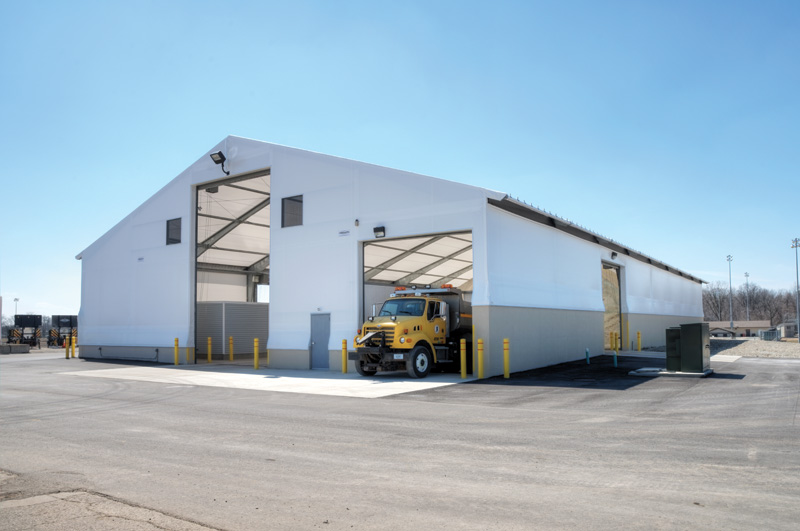
Firmly in the mainstream
Advances in engineering, material selection and construction techniques have transformed fabric structures from a niche commodity to a mainstream building solution. From implementing rigid-frame design to innovating better methods for attaching fabric panels, manufacturers have redefined what tension fabric buildings can achieve, offering the engineering flexibility and durability to meet modern construction demands.
Author
Eric Donnay is vice-president of sales and marketing for Legacy Building Solutions. With nearly three decades of industrial, commercial, and residential construction experience, Donnay is dedicated to helping Legacy sales staff find unique solutions to specific customer requirements. He can be reached via email at edonnay@legacybuildingsolutions.com.


